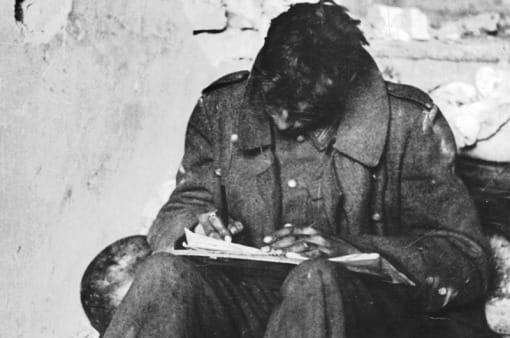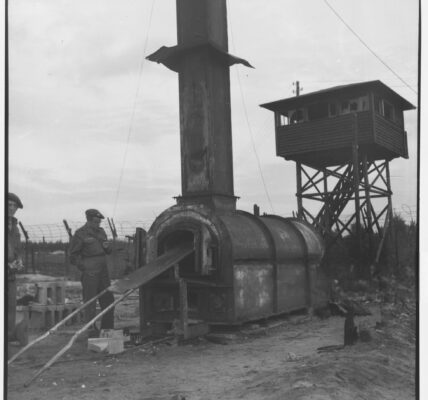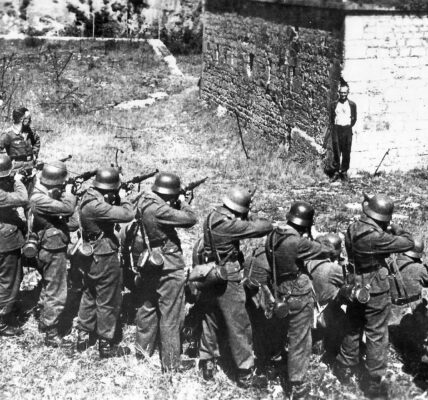- Homepage
- Uncategorized
- Stalingrad 1943 – A German soldier writes his last letter home. Amidst rubble, cold, and hope, he writes not about the war, but about the life he misses.
Stalingrad 1943 – A German soldier writes his last letter home. Amidst rubble, cold, and hope, he writes not about the war, but about the life he misses.

It is winter in Stalingrad. The snow falls silently over a destroyed city that has become a mass grave. Amidst the rubble, smoke, and cold, a man sits—a German soldier. He is young, perhaps 22 or 23 years old. His coat is torn, his hands tremble with frost. In his lap lies a small piece of paper. He writes.
His helmet lies beside him, his rifle leans against the wall. For a moment, the war seems far away. Only the scratching of his pencil on the paper breaks the silence. He isn’t writing about the battle, not about orders or victories—he is writing about home.
“Dear Mother, dear Father,” he begins. “I’m doing well, as far as one can tell here…”
He knows that’s not true. He knows that hunger is slowly consuming him, that the cold is eating away at his bones. But he doesn’t want to burden his family. He wants to give them hope, even though he himself has long since lost all hope.
Outside, the dull thunder of cannons echoes. The sky is black with smoke. But in this corner of the ruins, in this brief moment, only he and the letter exist.
Perhaps he’s writing about his little brother sledding at home. Or about the girl who promised to wait for him. Perhaps he’s writing simply to remind himself that there is life somewhere beyond this hell.
Stalingrad – the place where hundreds of thousands of men are trapped. Without food, without hope, surrounded by a cold that freezes even the soul. The front has collapsed. Supplies are cut off. Every day is a fight for survival.
The soldier knows this letter will probably never arrive. The postal routes are destroyed; many letters end up in the snow, in fire, in blood. But he writes anyway. Because writing means still being human.
His fingers are sore, the ink almost freezes on the paper. He pauses, looks at what he has written. Then he adds one last line:
“Don’t worry about me. I’m not alone.”
He is lying. He is alone. Around him lie the shadows of his comrades – men who once laughed, sang, and dreamed. Now they are silent. Only the wind carries their stories away.
He folds the letter and puts it in the breast pocket of his uniform. Perhaps he hopes that someone will find it one day. Perhaps he doesn’t even think about that – perhaps he just wants to hold on to what he has left: words.
A chaplain passes by and blesses the wounded. An officer shouts orders, but the voices sound distant. The soldier remains seated, eyes closed, head leaning against the wall.
He thinks of home. The sound of rain on the roof. The smell of bread. His mother’s laughter. In these thoughts he finds
Days later, the snow will cover everything – the city, the rubble, the dead. Perhaps him too. The letter in his pocket will become damp, the writing fade, but the words will remain.
Years later, long after the war, letters like this one are found in the ruins. Some are only fragments, some barely legible. But they all tell the same story: of fear, of longing, of humanity amidst the madness.
This soldier was no hero. He was no perpetrator, no victor – he was just a human being trying to cling to life as everything around him crumbled.
Looking at this photograph today, you don’t see the uniform, you don’t see the enemy. You see a young man trying to cling to a last spark of humanity.
His gaze is downcast, the world is collapsing above him – but he still holds the pen in his hand.
Perhaps this is the last victory a person can achieve in war:
not to defeat the enemy, but to avoid losing themselves.
Stalingrad 1943 – A place where a thousand voices fell silent, but one of them still wrote. And in this letter, in these few words, the truth of the war lives on – not in glory and honor, but in pain, memory, and quiet hope.
Related Posts

Between Hope and Despair: German Soldiers in the Chaos of War (082203) _it3
The photo shows a German soldier, scarred by fighting on the Eastern Front (1941). He is clearly armed with a Karabiner 98k and carrying a grenade…

Memories of German soldiers in the World War (Part 1) _de83
German soldiers salute at the Tomb of the Unknown Soldier in Paris (December 1940). In the photo, a German soldier stands next to the grave of his fallen comrade at the…

Old times, old stories: The lives of German soldiers (Part 44) _de82
A fully camouflaged German soldier with an MG 34 drum-magazine on the Eastern Front. A German paratrooper eats during a lull in the fighting at the Battle of Ortona…

Norway after liberation: Historical photos of German prisoners of war in Norway, 1945 _de81
The German occupation of Norway began on April 9, 1940, after German troops occupied the neutral Scandinavian country. It ended on May 8, 1945, after the…

Everyday life in war: German soldiers between combat and rest periods (Part 3) _de80
The photo shows German soldiers next to an MG-34 (1944). Army infantry use a depression in a wooden fence as a support for their MG42. In this way…

Advance to the West: Images from the French Campaign (Part 16) _de79
The photo shows a German soldier during the Battle of Dunkirk (1940). You can see that he has an M-24 stick grenade and a Karabiner 98k rifle on his belt…




